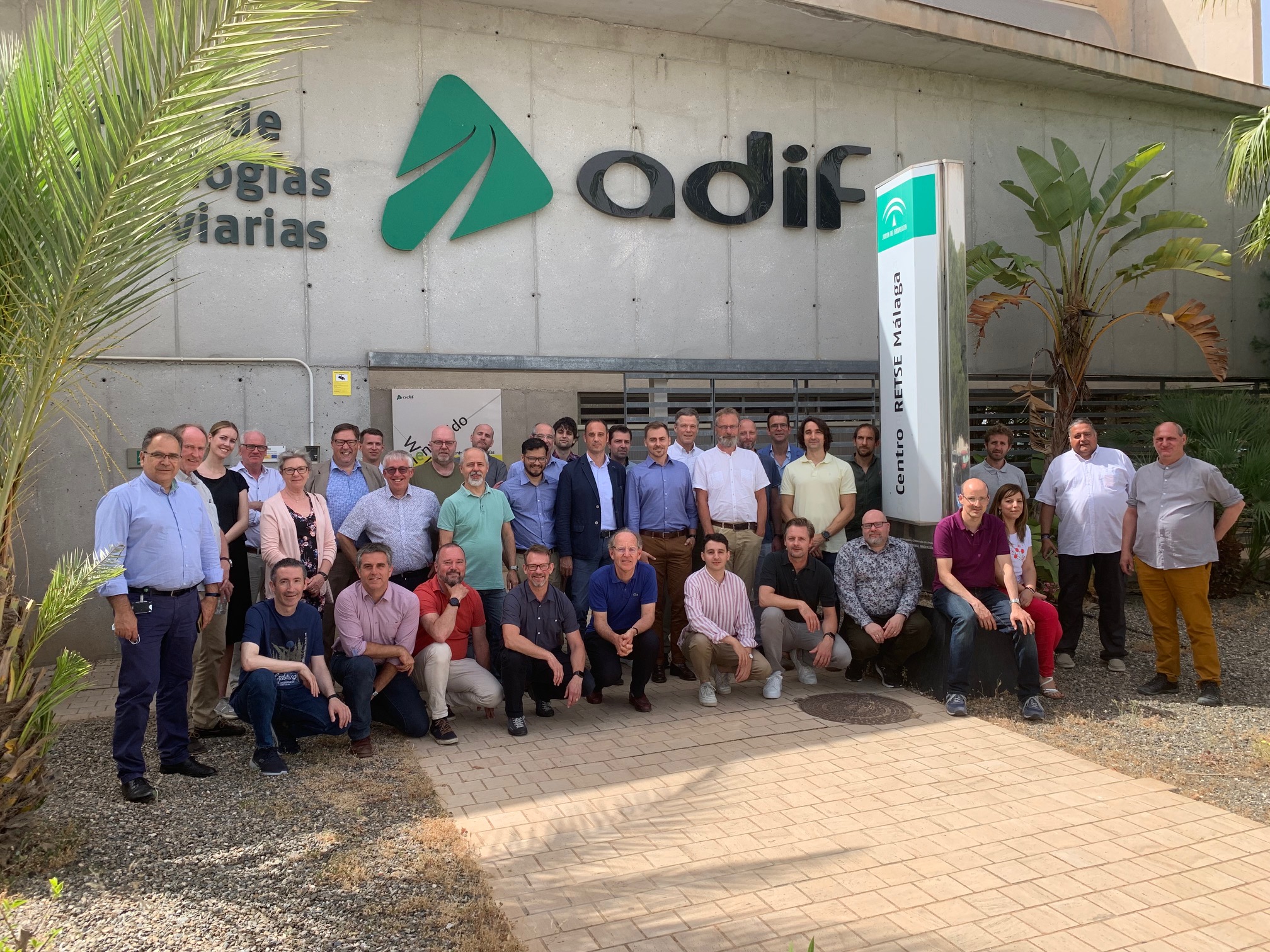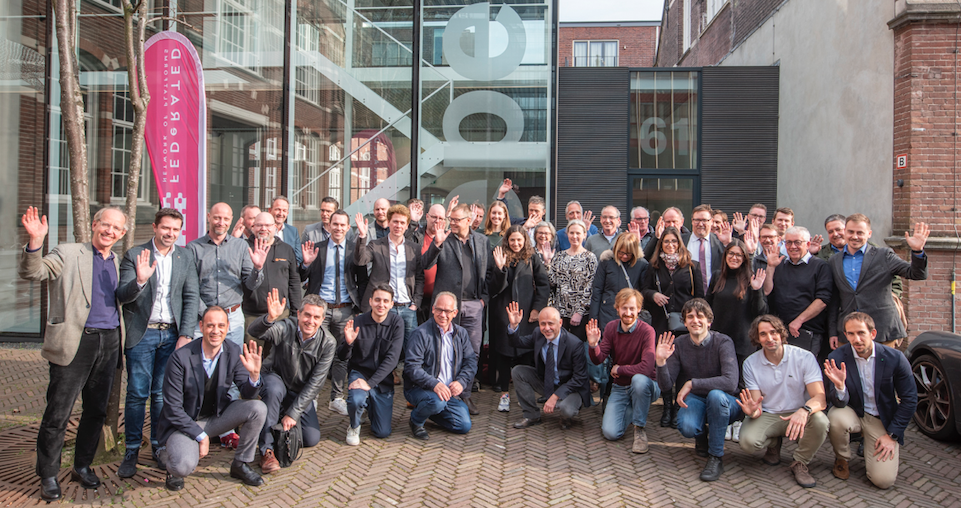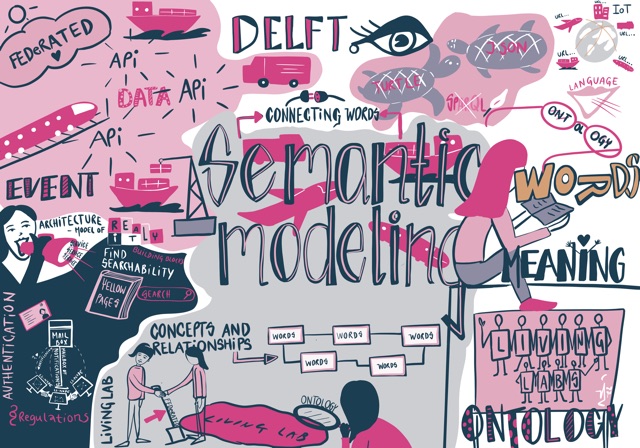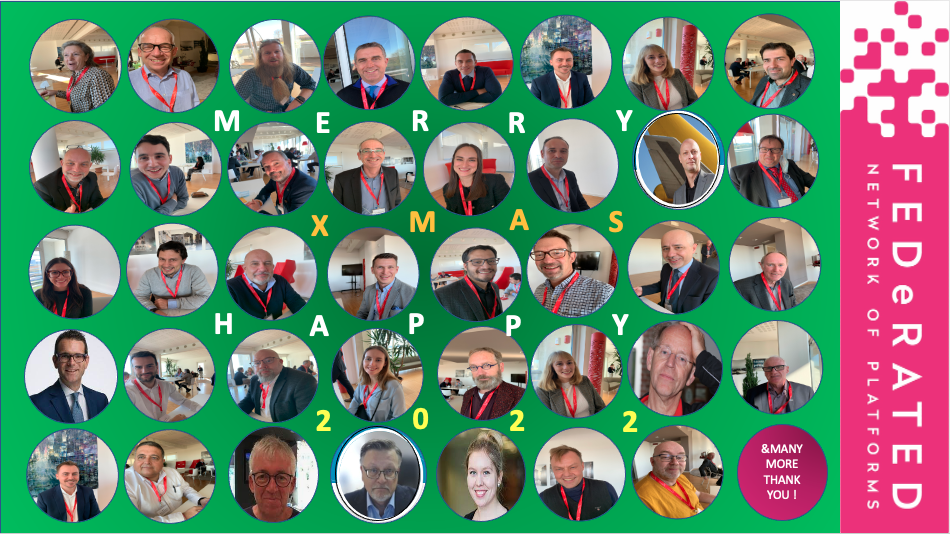On 15 and 16 June, 14 FEDeRATED project partners and many LivingLab project leaders met in Málaga at the premises of ADIF, hosting the 12th Consortium Board meeting and a workshop. The major issues being:
- Speed up the current progress towards delivering factual output - tangible LivingLabs, a concise Reference Architecture and a shared vision on the content of a (to be validated) FEDeRATED MasterPlan and data sharing prototype .
- Seek for interopability and collaboration between the LivingLabs
- Agree the basic (Reference) data sharing Architecture
- Keep loading the mental engine of the participants also identifying the generic engines that can enable LivingLabs to effectively share data in a collaborative way
To streamline FEDeRATED partner engagement, an overarching Action Plan was developed to assist all partners executing their share of the FEDeRATED workflow management. This plan will be further detailed while executing. A template to measure the progress of the project in connection to the various topics identified in the Grant Agreement is also developed - Grant Agreement Audit List (federatedplatforms.eu).
 During the meeting, the IT Architecture Board agreed on a document covering the Reference Data Sharing Architecture (Basic Data Sharing Architecture Mitchell Out IT Architecture Group June 2022 (federatedplatforms.eu). An important challenge to the FEDeRATED project will be to describe the Reference (baseline) data sharing Architecture in “simple words”. Words that should not only provide sufficient meaning and context to IT Architects, but preferable also to a multitude of various stakeholders (logistic operators, public authorities – law enforcement/policy people – and stakeholder organisations). Therefore, the DTLF federative network of platforms policy approach might be explained as an EU data sharing grid for logistics and freight transport enabling Distributed Data Resources (DDR) - i.e. IT systems/platforms that provide or use data aimed at delivering services - to connect. On a local or national scale this implies DDR's will be empowered to scale their activities onto an overarching – interoperable - EU grid. The EU grid enables millions of IT systems/platforms to draw data at some times and supply data at other aimed at providing tailor made services to all participants in the grid, including compliance with legislation. The FEDeRATED mission is to identify the required DDR competences leading to full fletched, thus sustainable EU grid interoperability. Very complex to plan for, orchestrate and keep in balance. Innovative and transitional at the least.
During the meeting, the IT Architecture Board agreed on a document covering the Reference Data Sharing Architecture (Basic Data Sharing Architecture Mitchell Out IT Architecture Group June 2022 (federatedplatforms.eu). An important challenge to the FEDeRATED project will be to describe the Reference (baseline) data sharing Architecture in “simple words”. Words that should not only provide sufficient meaning and context to IT Architects, but preferable also to a multitude of various stakeholders (logistic operators, public authorities – law enforcement/policy people – and stakeholder organisations). Therefore, the DTLF federative network of platforms policy approach might be explained as an EU data sharing grid for logistics and freight transport enabling Distributed Data Resources (DDR) - i.e. IT systems/platforms that provide or use data aimed at delivering services - to connect. On a local or national scale this implies DDR's will be empowered to scale their activities onto an overarching – interoperable - EU grid. The EU grid enables millions of IT systems/platforms to draw data at some times and supply data at other aimed at providing tailor made services to all participants in the grid, including compliance with legislation. The FEDeRATED mission is to identify the required DDR competences leading to full fletched, thus sustainable EU grid interoperability. Very complex to plan for, orchestrate and keep in balance. Innovative and transitional at the least.
In 2022, high on the FEDeRATED agenda is the development of the FEDeRATED Milestone 10 report (due 31 October). This will serve as a follow up from the Interim MasterPlan - Milestone 2. The basis being the DTLF Building Blocks and FEDeRATED Core Operating Framework (elaborated in 37 Leading Principles). The follow up will be to identify and elaborate the functional requirements of a federated network of platform approach, being:
- Language (see more here)
- Service Register
- Security
- FEDeRATED/data sharing node
The LivingLabs will illustrate how the functional requirements of the DDRs can be technical implementated through real life business use cases. A next step will be to define the organisational requirements for actual federated data sharing between DDR's. This should be done through interoperability protocols - a set of arrangements between the participants of the grid - regarding:
- Connectivity
- Security
- Presentation
- Linked Event Data
- Business processes
During the FEDeRATED Málaga meeting, the partners and LivingLab managers showed their commitment to give it a try – both from a top-down as well as a bottom-up perspective - and assist the EC developing and establishing the minimum building conditions.
- Hits: 1698




